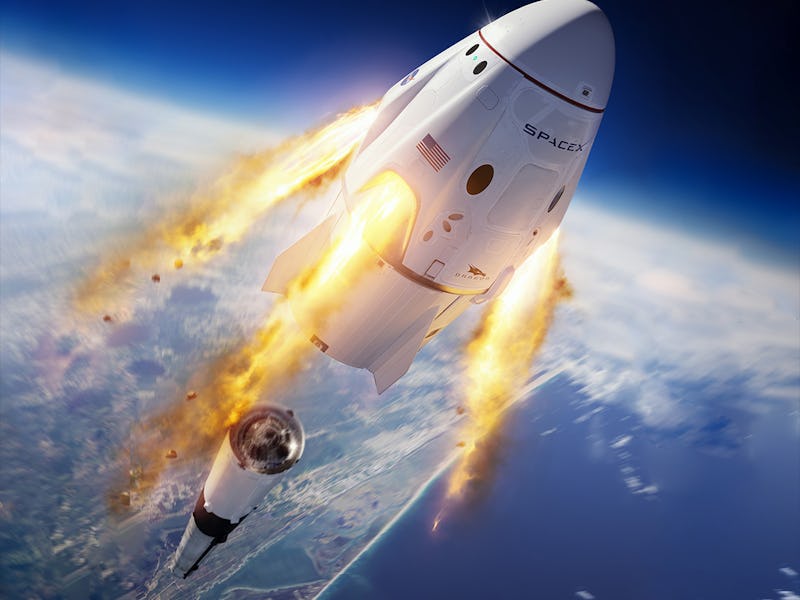SpaceX Crew Dragon: Elon Musk decries 'stranger than fiction' problem
NASA is counting on SpaceX to carry a mission crew into space on November 14. But the launch has already faced some odd setbacks.

The Crew Dragon, SpaceX's human-carrying capsule, has a "nail polish" problem.
The capsule is scheduled to send up four astronauts no earlier than 7:49 p.m. Eastern time on November — a mission dubbed "Crew-1." It will be the first non-test, crewed mission since the successful crewed test flight in May 2020.
But ahead of the big launch, SpaceX vice president Hans Koenigsmann explained in a NASA briefing this week that a problem with a "nail polish"-like substance discovered during a previous launch threatened to derail the grand plans. The problem already caused NASA to delay the Crew-1 flight earlier this month.
"Truth is stranger than fiction," Musk wrote on his Twitter page in response to an article on the issue from Teslarati.
The Crew-1 team.
The problem dramatically came to light during the GPS-III SV04 launch earlier this month, Koenigsmann said, when SpaceX stopped the October 2 launch with just two seconds till lift off.
The issue? Two of the engines attempted to start early. To find out what happened, the team removed the engines and took them to the McGregor test facility in Texas for further testing.
They found a component inside the gas generator – "basically like a little rocket engine" — that feeds propellant into the main chamber. The tests found a masking lacquer, left over from the build process, had blocked a vent hole.
The lacquer is used to mask components during the surface treatment. Koenigsmann speculated that some went into the vent during the washing or cleaning process. A "good analogy" for the lacquer was a "nail polish," which "in this case had a red color," Koenigsmann said. Classy.
NASA and SpaceX completed a test launch of the Dragon spacecraft in January 2020.
Upon closer inspection, the team found the same issue on two of the Crew-1 booster's engines. The same problem also affects one engine for the booster to be used in the Sentinel 6 mission, which is scheduled to launch a satellite on November 10.
The team is "in the process of swapping out two engines on the first stage of the Crew-1 vehicle due to this problem," according to Steve Stich, program manager for NASA's Commercial Crew program.
The Crew-1 launch has suffered multiple delays. A non-test crewed capsule mission to the International Space Station was scheduled in 2012 for December 2016, but development delays on both SpaceX and Boeing's parts pushed it back. It seemed things were back on track after the successful "Demo-2" test flight with two NASA astronauts, and the agency announced September 29 that Crew-1 would launch on October 31.
But on October 10, NASA delayed the mission from its October 31 launch date to November "as the company evaluates off-nominal behavior of Falcon 9 first stage engine gas generators observed during a recent non-NASA mission launch attempt."
Then last weekend, the crew went into a "soft quarantine" after they "started to work through the anomaly" and "start to see a path to get to flight." If all is now well, then NASA will host a static test fire of the rocket on Monday, November 9, a routine check that fires the engines without moving the rocket. On the 11th, the team will hold a practice with the crew, leading up to the launch that Saturday.
Following the November 14 launch, the Crew Dragon is expected to dock with the space station at around 4:04 a.m. Eastern time on November 15, an eight and a half hour flight time.
The Inverse analysis – SpaceX has faced numerous delays to launches in recent months, and this story shows that some come from the most surprising issues. While other launches had been delayed due to weather or camera issues, it seems this one had been caused by a small amount of substance falling into the wrong place at the wrong time.
Successfully identifying the problem should mean Crew-1 and Sentinel 6 can launch on schedule – if they manage, it will be the first in a long line of planned crewed SpaceX launches for NASA.
This article was originally published on